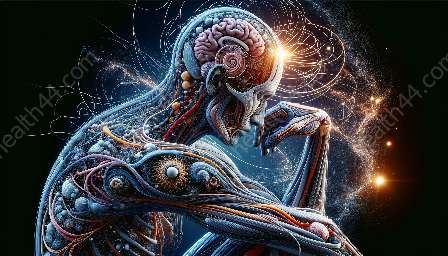Radiographic anatomy holds a crucial place in the world of health education and medical training. It forms the foundation for understanding the intricate structures of the human body through radiographic imaging techniques. This comprehensive guide explores the intersection of radiographic anatomy with general anatomy and its vital role in the realm of medical education.
The Importance of Radiographic Anatomy
Radiographic anatomy serves as a cornerstone of medical training, providing invaluable insights into the internal structures of the human body. By utilizing various imaging modalities such as X-rays, CT scans, and MRIs, healthcare professionals can visualize and interpret anatomical features, aiding in the diagnosis and treatment of a wide range of medical conditions.
Furthermore, a profound understanding of radiographic anatomy is essential for medical students, radiologic technologists, and healthcare practitioners to proficiently interpret images and accurately identify anatomical landmarks, anomalies, and pathological conditions.
The Integration with General Anatomy
While radiographic anatomy focuses on the visualization of anatomical structures through imaging techniques, it closely aligns with general anatomy, which delves into the study of body structures through dissection, observation, and palpation. The synergy between radiographic and general anatomy is evident in their collaborative efforts to enhance medical knowledge and improve patient care.
Understanding general anatomy provides the foundation for interpretation of radiographic images, enabling healthcare professionals to correlate external landmarks and internal structures with imaging findings. This integration fosters a holistic comprehension of the human body, amalgamating the principles of both radiographic and general anatomy.
Applications in Medical Training and Education
The application of radiographic anatomy extends beyond diagnostic imaging, encompassing a broad spectrum of medical training and education. Its role in the curriculum of medical schools and allied health programs is pivotal, as it equips students with the essential skills to proficiently interpret radiographic images and correlate them with anatomical knowledge.
Moreover, radiographic anatomy serves as a bridge between theoretical learning and clinical practice, offering students the opportunity to comprehend the anatomical basis of various medical conditions and interventions. This practical integration enhances their diagnostic acumen and instills a comprehensive understanding of human anatomy, contributing to the development of competent healthcare professionals.
Enhancing Patient Care and Diagnosis
The synergy between radiographic anatomy and general anatomy plays a fundamental role in improving patient care and diagnosis. Healthcare practitioners utilize their knowledge of radiographic anatomy to accurately identify and localize pathological conditions, enabling precise diagnosis and treatment planning.
Additionally, the integration of radiographic anatomy with general anatomy empowers healthcare teams to collaborate effectively, promoting multidisciplinary approaches to patient care. This collaborative effort fosters a comprehensive understanding of the patient's condition, leading to efficient and targeted medical interventions.
Emerging Technologies and Innovations
The field of radiography continues to evolve with technological advancements, offering new dimensions to the study of radiographic anatomy. Innovations such as 3D imaging, virtual dissection, and augmented reality have revolutionized the visualization and interpretation of anatomical structures, providing enhanced educational and diagnostic tools for healthcare professionals.
Furthermore, the integration of artificial intelligence and machine learning in radiographic imaging presents exciting prospects for automating anatomical interpretation and accelerating diagnostic processes. These technological advancements underscore the dynamic nature of radiographic anatomy and its continual evolution in the realm of medical education and healthcare delivery.
Conclusion
Radiographic anatomy embodies a dynamic intersection between medical training and general anatomy, offering a multidimensional approach to understanding the intricacies of the human body. Its indispensable role in health education and medical training underscores the significance of integrating radiographic anatomy into the curriculum of aspiring healthcare professionals.
By bridging the gap between theoretical knowledge and clinical application, radiographic anatomy enriches the understanding of human anatomy and contributes to the advancement of patient care. Embracing the evolution of radiographic imaging technologies, educators and healthcare practitioners can harness the potential of radiographic anatomy to cultivate a profound comprehension of the human body and its pathological manifestations.


